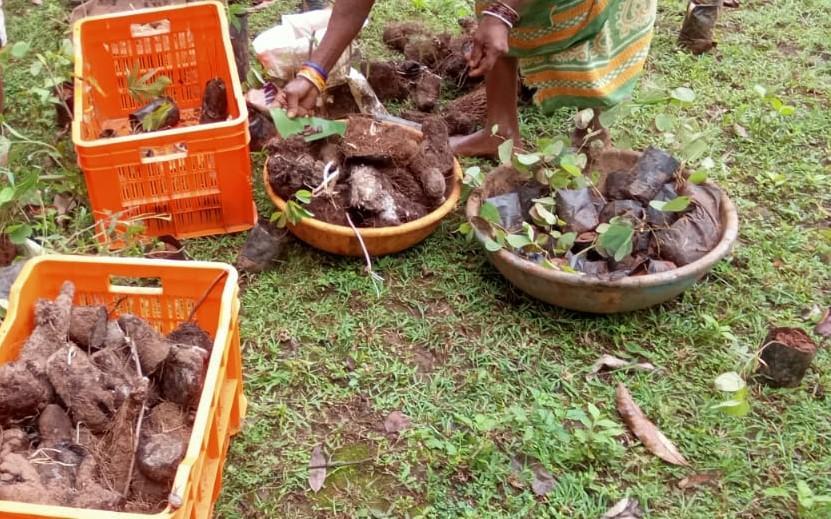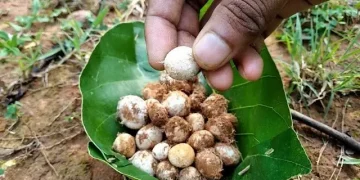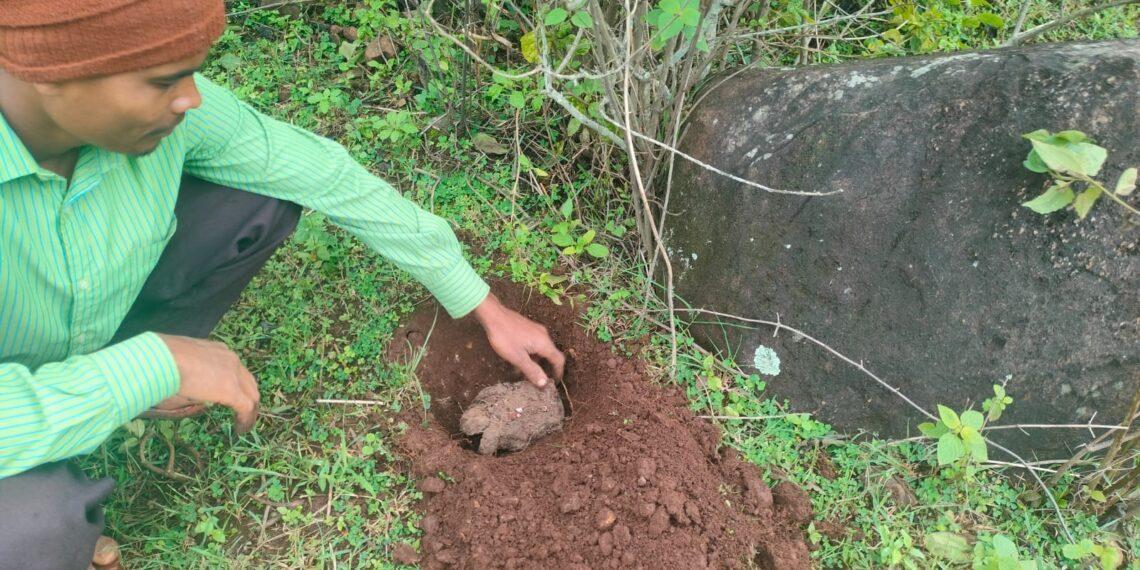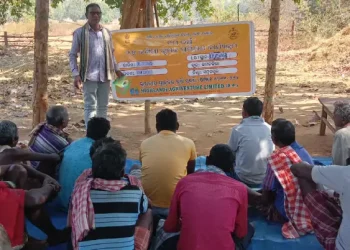Bhubaneswar
The yam (Dioscorea sp) has many benefits. It is a source of fibre, potassium, manganese, copper and antioxidants, and can help control blood sugar, while improving brain health.
Adivasi wisdom has possibly grasped this knowledge unknowingly, and the Kondh tribe of Odisha takes great pleasure in creating delicious fare from this rather tasteless tuber.
Called Khamba or Mati Alu in Odia, the yam is found freely in the jungles of Phulbani Block of Odisha’s Kandhamal, district. The Kondhs call it Masia Kanda or Ban Alu (jungle potato). It is also found in the shape of elephant foot.

Men and women start off into the jungles in the vicinity of their household in the wee hours in search of the roots and can be seen with baskets of their collections. It’s washed, peeled, sliced into circular pieces and boiled in an earthen pot. The cooked yam is cooled, mixed with sugar or jaggery and left to marinate.
Laxmidhar Sahoo, chairman of Cuttack-based Sanskruti o Kala Parishad, is from near Kandhamal and well-acquainted with the delicious sweet dish. “It’s served in Siali Chauti/Dhan, a cup/bowl fashioned from dried sal leaves,” he says.
“The bowls sell like hotcakes at the weekly haat. It’s a huge favourite among tribals and non-tribals alike, and quite difficult to resist,” he smiles.
A local tribal, Chinchina, talks about some miraculous benefits of the Masia Kanda. “It is also used to get relief in case of a reptile or rodent bite. In case of a snakebite, we press some blood out of the affected site and immediately rub in peeled masia kanda. It helps,” he tells The Indian Tribal.





















